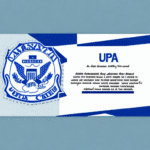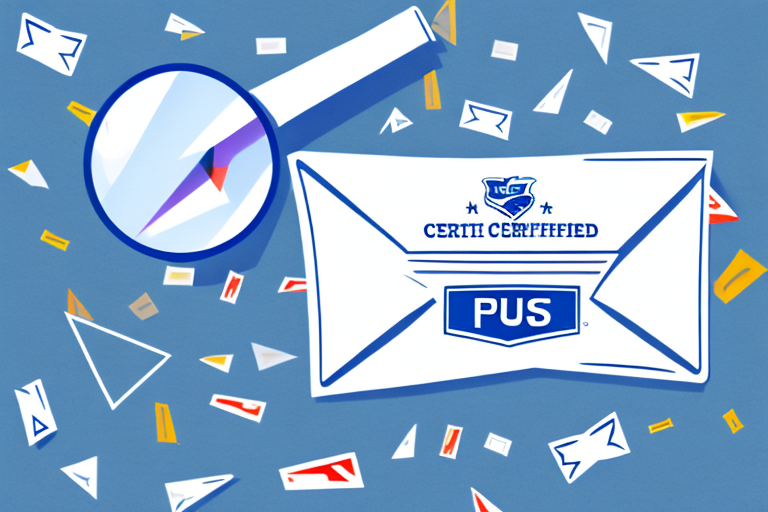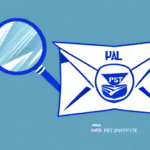Understanding Certified Mail Costs: A Comprehensive Guide
Sending important documents securely requires a reliable mailing service. Certified mail, offered by the United States Postal Service (USPS), is a popular choice for ensuring proof of mailing and delivery. In this guide, we delve into the costs associated with certified mail, explore the different types available, and provide tips to optimize your mailing expenses.
What is Certified Mail and Its Importance
Definition and Purpose
Certified mail is a USPS service that provides the sender with proof of mailing and delivery. It includes a unique tracking number, requiring the recipient's signature upon delivery. This service is essential for sending legally binding documents, important notices, and other valuable correspondence.
Benefits of Using Certified Mail
- Proof of Mailing and Delivery: Provides evidence that the mail was sent and received.
- Tracking: Allows real-time tracking of the mail's journey.
- Legal Evidence: Can be used as evidence in legal proceedings to demonstrate that documents were sent and received.
Types of Certified Mail Services and Their Pricing
Overview of Certified Mail Options
USPS offers various certified mail services tailored to different needs. Understanding these options can help you choose the most cost-effective and efficient service for your requirements.
Certified Mail Services
- First-Class Certified Mail: Ideal for letters and lightweight packages.
- Priority Mail Certified: Suitable for heavier items requiring faster delivery.
- Priority Mail Express Certified: The fastest option with overnight delivery to most U.S. locations.
Current Pricing for Certified Mail Services
As of 2023, the pricing for certified mail services is as follows:
- First-Class Certified Mail: $4.00 per mailing
Includes $3.60 for First-Class Mail and a $0.40 certified mail fee. - Priority Mail Certified: $7.95 per mailing
Includes $7.75 for Priority Mail and a $0.20 certified mail fee. - Priority Mail Express Certified: $26.35 per mailing
Includes $22.75 for Priority Mail Express and a $3.60 certified mail fee.
For the most accurate and up-to-date pricing, visit the USPS official website.
How to Properly Use Certified Mail
Steps to Send Certified Mail
- Complete your mail piece as usual, ensuring all necessary information is included.
- At your local post office, request a certified mail form and fill it out accurately.
- Choose the appropriate certified mail service based on your delivery needs.
- Affix the certified mail label and any additional postage required.
- Keep the receipt and tracking number for your records.
Filling Out Certified Mail Forms Correctly
Accuracy is crucial when completing certified mail forms to avoid delays or delivery issues. Ensure that all recipient information is correct and that you retain your receipt and tracking number.
Cost-Saving Strategies for Certified Mail
Utilize Online Postage Services
Many online services offer discounted rates for certified mail. By purchasing postage online, you can save up to 10-15% compared to in-person rates. Additionally, online platforms allow you to print labels from home or the office, streamlining the mailing process.
Bulk Mailing Discounts
If you frequently send certified mail, consider bulk mailing options. USPS provides discounted rates for bulk shipments, which can significantly reduce your overall costs. Refer to the USPS Business Mailing Services for more information.
Choose the Right Service Level
Selecting the appropriate certified mail service based on urgency and value can help manage costs. For non-urgent documents, First-Class Certified Mail is more economical, whereas Priority Mail Express is reserved for time-sensitive or highly valuable items.
Certified Mail for Legal and Important Documents
Ensuring Security and Authenticity
Certified mail is indispensable for sending legal documents, such as contracts, court papers, and official notices. The service ensures that documents reach their intended recipients securely, with proof of delivery that can be used in legal contexts.
Establishing a Clear Timeline
Certified mail provides a documented timeline of when documents were sent and received. This can be critical in legal disputes where the timing of correspondence is significant.
Professionalism in Correspondence
Using certified mail adds a level of formality and professionalism to your communications, reinforcing the importance and seriousness of the correspondence.
Tracking and Managing Your Certified Mail
How to Track Certified Mail
Tracking your certified mail is straightforward. Once mailed, you receive a tracking number that can be used on the USPS Tracking Page to monitor the status of your delivery in real-time.
Understanding Tracking Information
Tracking updates include the date and time the mail was sent, processed, out for delivery, and delivered. This information provides transparency and assurance that your mail is progressing as intended.
Addressing Tracking Delays
While USPS strives to provide timely tracking updates, delays can occur, especially in remote or high-traffic periods. If tracking information is not updated within 24 hours, contact USPS Customer Service for assistance.
Handling Lost or Delayed Certified Mail
Steps to Take if Mail is Lost
- Contact USPS: Reach out to USPS customer service with your tracking number to initiate an investigation.
- Submit a Claim: If your mail is officially declared lost, you may be eligible to file a claim for reimbursement.
Managing Delays in Delivery
- Verify Address Accuracy: Ensure that the recipient's address is correct to prevent misdelivery.
- Consider Alternative Services: For time-sensitive documents, use expedited services like Priority Mail Express.
Preventing Future Issues
To minimize the risk of lost or delayed mail, always double-check recipient information, use secure packaging, and consider additional services like insurance for valuable items.
Comparing Certified Mail with Other Mailing Services
Cost Comparison
Certified mail is generally more expensive than standard mailing services due to the added security and tracking features. For instance, sending a first-class letter costs $0.55, whereas a first-class certified letter costs $4.00.
Security and Reliability
While standard mail offers basic delivery services, certified mail provides enhanced security with tracking and confirmation of delivery. This makes certified mail a better choice for important and sensitive documents.
Alternative Mailing Options
- Registered Mail: Offers higher security than certified mail, suitable for extremely valuable items.
- Priority Mail: Provides faster delivery times without the need for delivery confirmation.
- Express Mail: The fastest USPS service with guaranteed overnight delivery to most locations.
Choose the mailing service that best fits your needs based on the importance, value, and urgency of your documents.
Conclusion
Certified mail is a valuable service for sending important and legally binding documents securely. By understanding the costs, available services, and best practices, you can effectively manage your mailing needs while ensuring the safety and confirmation of your deliveries. For more information and the latest updates on certified mail services, visit the USPS official website.






















